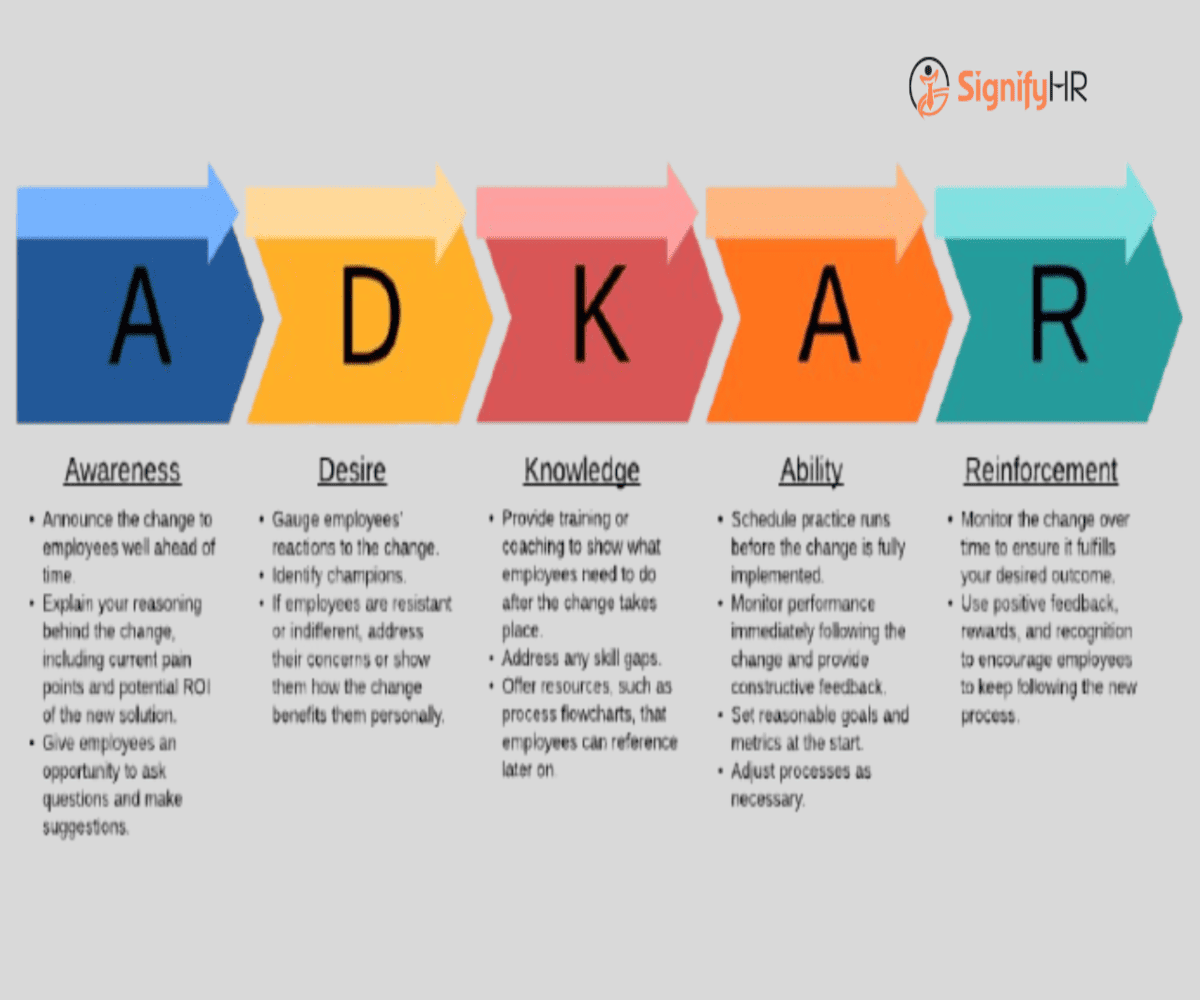Change is an inevitable part of any business or organization. Whether adapting to market trends, implementing new technologies, or restructuring operations, successful change management is crucial. One of the most effective frameworks for managing organizational change is the ADKAR Model, developed by Jeff Hiatt, the founder of Prosci.
This model provides a structured approach to help organizations navigate change smoothly and achieve long-term success. Let’s explore each stage in detail and understand how it applies to management courses and business leadership.
Understanding the ADKAR Model
1. Awareness (A)
The first step in any change initiative is creating awareness about the need for change. Employees must understand why change is necessary and what challenges the organization is trying to overcome.
Key Actions:
- Communicate the reasons for change clearly.
- Highlight risks of not changing.
- Use data and real-life examples to support the need for transformation.
2. Desire (D)
Once awareness is established, employees must develop a personal desire to support and participate in the change. Leadership should work to create motivation and engagement.
Key Actions:
- Address concerns and resistance proactively.
- Provide incentives and recognition for involvement.
- Connect the change to personal and professional benefits.
3. Knowledge (K)
To successfully implement change, employees need the right knowledge and skills. Training and educational initiatives help bridge this gap.
Key Actions:
- Provide targeted training programs.
- Share best practices and case studies.
- Offer coaching and mentorship opportunities.
4. Ability (A)
Even with knowledge, employees must be capable of implementing new processes or behaviors effectively. Hands-on practice and support are crucial.
Key Actions:
- Conduct workshops and hands-on training.
- Assign mentors to guide employees.
- Create an environment for trial and feedback.
5. Reinforcement (R)
For change to be sustained, reinforcement mechanisms must be in place to prevent reverting to old habits. Continuous monitoring and support ensure long-term success.
Key Actions:
- Establish performance metrics and feedback loops.
- Recognize and reward adherence to change.
- Embed new behaviors into company culture.
Conclusion
The ADKAR Model offers a structured and practical approach to implementing successful organizational change. For management students and professionals, understanding this model is essential for driving transformation, overcoming resistance, and fostering a culture of adaptability.
By applying these principles, organizations can navigate change more effectively, ensuring long-term success and competitive advantage in an ever-evolving business landscape.
Key Takeaways:
- Change management requires structured awareness, motivation, skill-building, and reinforcement.
- Employee engagement is crucial for successful adoption.
- Continuous support ensures sustainability and long-term benefits.
Mastering the ADKAR Model equips managers and business leaders with the tools needed to lead successful transformations, making it an essential topic in management courses and corporate leadership training.

